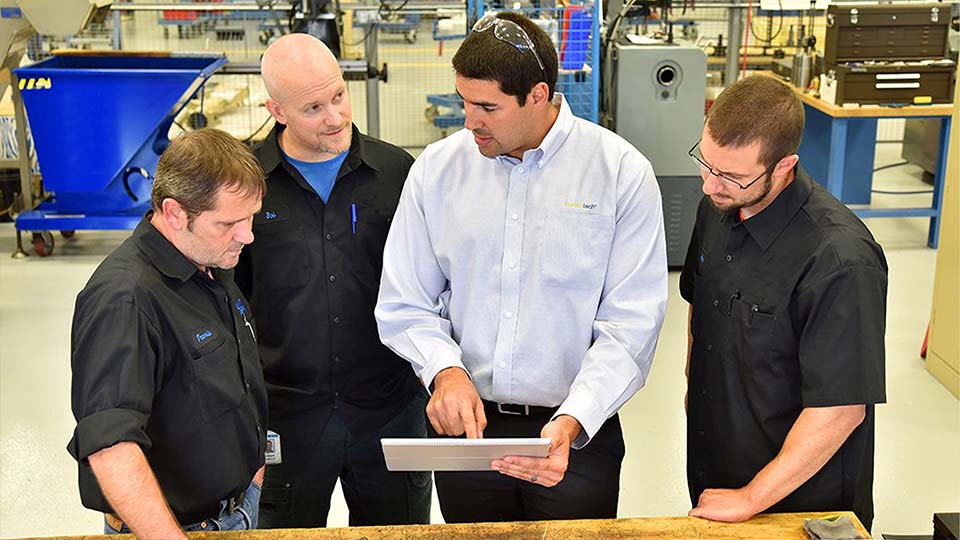Our team of board-certified ergonomists get a lot of questions from customers, webinar attendees, even social media followers on best practices and insights for developing strong ergonomics programs. But a large element of having a strong program is having a solid ergonomics team. Let’s discuss how to build an ergonomics team that will support and help sustain your ergonomics program.
Who should be on an ergonomics team?
When creating an ergonomics team, it’s important to consider these questions:
- How is my organization structured?
- Who is available?
- Who can get things done?
- Who has access?
- Who has influence?
While you’re considering who to include in your team, know that having a large team doesn’t automatically ensure success. The more people involved, the less ownership each person feels the need to take, and then the less effort each person makes. The ergonomics team only needs to be large enough to accomplish the workload.
The team should made up of a mix of employees, created based on the structure of your organization. For example, if there are no engineers at your facility, those roles could be replaced with maintenance members. And, don’t just select individuals based on role, consider team members who have characteristics which will lead to success, such as: reliable, participative, innovative, communicative, willing to learn, results-oriented.
We often recommend creating Core Teams, who can do everything within the job improvement process, along with Extended Teams, made up of those individuals with expertise in a specific area (like maintenance in improvement implementation, supervisors of a specific area, leadership to communicate company-wide, etc.) who can be called on when needed.
What should the team be doing?
Although the ergonomics team is just one part of the support structure of an ergonomics improvement process, they are a very important element. These individuals will have specialized knowledge, skills and tools to provide tactical assistance to the ergonomics process.
The ergonomics team will have two functions – to DO assessments, prioritize interventions, oversee/perform job improvements; and to MANAGE the process, promote it, and continuously improve and evolve the program.
The Core Team members need to be available to attend regular meetings, perform assessments, pursue improvements during non-meeting times, have access to technology and working knowledge of the internal process required to make change. Keep in mind that the core teams must be supported by a management sponsor and process lead who should also have specific actions they are responsible for, such as:
- Committing resources
- Ensuring accountability
- Communicating with stakeholders
- Tracking progress to goal
- Maintaining records
How much time will they need?
When someone asks “How much time will it take?” they really mean “How much will it cost?” It’s best to understand how much time is acceptable to your organization and then determine, from that, what can be done in the allotted time. This way you can work forwards or backwards.
Typical Time Calculation
2 hours/person/month: 30 mins. for meetings (25%), 30 mins. for assessments (25%) (1 assessment/person), 1 hr. for implementing improvements, following up, etc. (50%)
Consider the following calculation. If you can allot two hours of time per month:
- Available Team Hours Per Month ÷ Time to Complete Assessments = Assessments Completed Per Month
- 2 hours per month ÷ 30 minutes = 4 Assessments Per month
- 100 Unique Jobs ÷ 4 Assessments Per Month = 25 Months to Complete ALL Assessments
If you’d like to have all your assessments completed in 12 months, you’re going to need to increase the time available to complete assessments or increase the number of team members to get more done in the allotted time.
Training and leveraging an ergonomics team has proven to add value in effectiveness and acceptance of workplace changes. Keep in mind that teams are fluid and they’ll change over time, but having a solid foundation of process, tools, and reporting will ensure any new members of the team will be successful.
